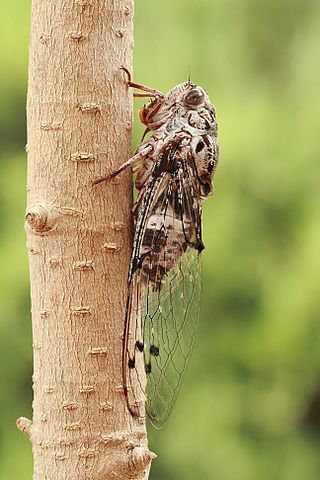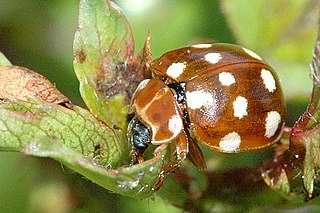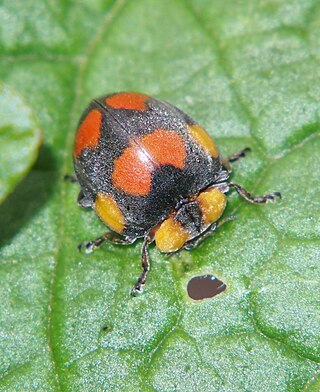
Human hair color is the pigmentation of human hair follicles due to two types of melanin: eumelanin and pheomelanin. Generally, if more melanin is present, the color of the hair is darker; if less melanin is present, the hair is lighter. The tone of the hair is dependent on the ratio of black or brown eumelanin to yellow or red pheomelanin. Levels of melanin can vary over time causing a person's hair color to change, and it is possible to have hair follicles of more than one color on the same person. Some hair colors are associated with some ethnic groups due to observed higher frequency of particular hair color within their geographical region, e.g. straight dark hair amongst East Asians and Southeast Asians, a large variety of dark, fair, curly, straight, wavy and bushy hair amongst Europeans, West Asians and North Africans, curly, dark, and uniquely helical hair with Sub Saharan Africans, whilst gray, white or "silver" hair is often associated with age and wisdom.

The English Cocker Spaniel is a breed of gun dog. It is noteworthy for producing one of the most varied numbers of pups in a litter among all dog breeds. The English Cocker Spaniel is an active, good-natured, sporting dog standing well up at the withers and compactly built. There are "field" or "working" cockers and "house" cockers. It is one of several varieties of spaniel and is the foundation of its American cousin, the American Cocker Spaniel. The English Cocker is closer to the working-dog form of the Field Spaniel and the English Springer Spaniel. English Cocker Spaniels are also known as the "Merry Spaniel" due to their constantly wagging tail.

The brown bullhead is a fish of the family Ictaluridae that is widely distributed in North America. It is a species of bullhead catfish and is similar to the black bullhead and yellow bullhead. It was originally described as Pimelodus nebulosus by Charles Alexandre Lesueur in 1819, and is also referred to as Ictalurus nebulosus.

The parti-coloured bat or rearmouse is a species of vesper bat that lives in temperate Eurasia, from Western and Southern Europe, eastwards over the Caucasus and Iran into Mongolia, north-east China, Korea, Afghanistan and northern Pakistan.

The Kanni (கன்னி), meaning pure, is a rare indigenous South Indian sighthound breed of dog found in the state of Tamil Nadu. Their native breeding tract is located around villages in the Tirunelveli, Virudhunagar and Thoothukudi districts. The breed is used mainly for coursing. "Kanni" refers to the black and tan and black and sable varieties, while the solid-coloured variety is known as the Chippiparai. However, some experts claim that the Kanni and the Chippiparai are distinct breeds.

The Indian giant squirrel or Malabar giant squirrel is a large multi-coloured tree squirrel species endemic to forests and woodlands in India. It is a diurnal, arboreal, and mainly herbivorous squirrel.

Erebia ligea, the Arran brown, is a member of the subfamily Satyrinae of the family Nymphalidae. This brown is widespread in south-eastern and northern Europe. It prefers mixed woodlands at low altitudes. It is rarely seen in open areas. This species was first described by Carl Linnaeus in his 1758 10th edition of Systema Naturae, and the type locality is Sweden.

Coccinellidae is a widespread family of small beetles. They are commonly known as ladybugs in North America and ladybirds elsewhere in the English-speaking world; "lady" referring to mother Mary. Entomologists prefer the names ladybird beetles or lady beetles to avoid confusion with true bugs. The more than 6,000 described species have a global distribution and are found in a variety of habitats. They are oval beetles with a domed back and flat underside. They are sexually dimorphic; adult females are larger than males. Many of the species have conspicuous aposematic (warning) colours and patterns, such as red with black spots, that warn potential predators that they are distasteful.

Aleeta curvicosta is a species of cicada, one of Australia's most familiar insects. Native to the continent's eastern coastline, it was described in 1834 by Ernst Friedrich Germar. The floury baker is the only described species in the genus Aleeta.

Calvia quatuordecimguttata, the cream-spot ladybird, is a species of ladybird in the family Coccinellidae. Its distribution is holarctic, it being found in Europe and through the East Palearctic to Japan. It is introduced to North America. This ladybird is generally 4 to 5 millimetres in length and varies in appearance depending on the geographical location. It usually lives in hedgerows and deciduous trees.
Adelphocoris rapidus, common names for which are rapid plant bug or superb plant bug, is a species of Hemiptera in the family Miridae, that can be found everywhere in the United States, and in the Peace–Athabasca Delta, Canada. The species are larger than other members of the family, and are either yellowish-black or orange-black coloured.

Racial groups in South Africa have a variety of origins. The racial categories introduced by Apartheid remain ingrained in South African society with South Africans and the governing party of South Africa continuing to classify themselves, and each other, as belonging to one of the four defined race groups. Statistics South Africa asks people to describe themselves in the census in terms of five racial population groups. The 2019 mid-year population estimates were 80.7% Black South African, 7.9% White South African, 8.8% Coloured South African, and 2.6% Indian South African.

Away colours or road colours are a choice of coloured clothing used in team sports. They are required to be worn by one team during a game between teams that would otherwise wear the same colours as each other, or similar colours. This change prevents confusion for officials, players, and spectators. In most sports, it is the visiting or road team that must change. Second-choice kits are commonly known as away kits or change kits in British English and as away uniforms or road uniforms in American English.
Platymantis diesmosi is a species of frogs that was first described by Brown and Gonzalez in 2007. It is endemic to the Philippines and is found on Malinao Volcano.

Papuaepilachna guttatopustulata, the large leaf-eating ladybird, is a species of ladybird, formerly in the genus Henosepilachna endemic to parts of Australasia, specifically New South Wales, Queensland, the Bismarck Archipelago, New Guinea, New Hebrides and Solomon Islands.
Ophonus stictus is a species of ground beetle native to the Palearctic, and the Near East. In Europe, it is only absent in the following countries and islands: Albania, Andorra, the Baltic states, the Canary Islands, the Channel Islands, Corsica, Crete, the Cyclades, Cyprus, the Dodecanese, the Faroe Islands, Franz Josef Land, Gibraltar, Iceland, Ireland, Madeira, Malta, Monaco, the North Aegean islands, Novaya Zemlya, Russia, San Marino, Sardinia, the Savage Islands, Scandinavia, Sicily, Svalbard and Jan Mayen, Vatican City, and in all states of former Yugoslavia except for Croatia, Slovenia, Bosnia and Herzegovina. Its presence in Latvia is doubtful.
Monstera punctulata is a species of flowering plant from the family Araceae found in southern part of Mexico, and Central America.
Philorhizus sigma is a species of brown coloured ground beetle in the Lebiinae subfamily that can be found in everywhere in Europe, except for Andorra, Croatia, Monaco, San Marino, Vatican City and European islands. It is also found in such Asian countries as Georgia and Israel.

Ale is a type of beer brewed using a warm fermentation method, resulting in a sweet, full-bodied and fruity taste. Historically, the term referred to a drink brewed without hops.

Stenaelurillus hirsutus is a species of jumping spider in the genus Stenaelurillus that lives in Central Africa, Congo, Ghana, Kenya, Senegal, Tanzania, and Uganda. It was first described in 1927 by Robert de Lessert. The spider is small, with a cephalothorax that ranges in length between 2.3 and 2.7 mm in length and an abdomen between 2.4 to 2.5 millimetres long. The male is distinguished by its black and white striped pattern on the anterior of the carapace and a mane of light-coloured hairs around the eye field that are reminiscent of a Mohawk hairstyle. The female's epigyne has a deep narrow pocket and bean-shaped copulatory openings. The clypeus has a distinctive pattern of three vertical white stripes on its otherwise black exterior.














